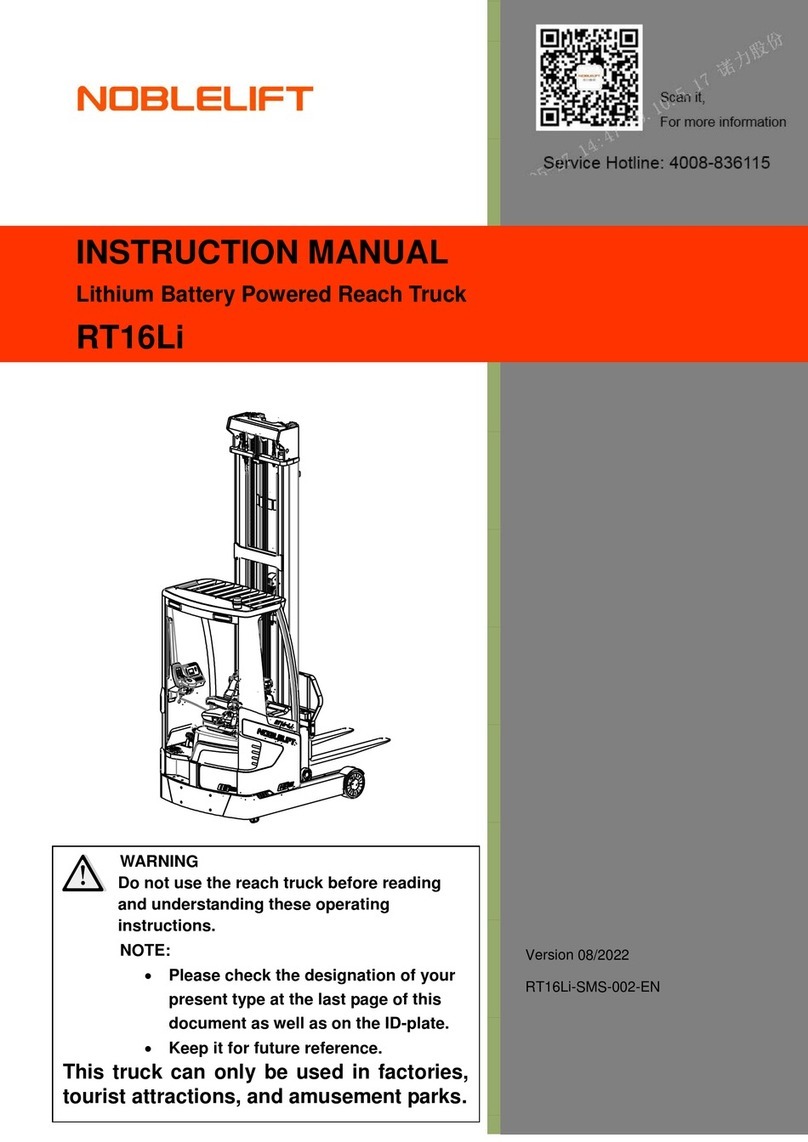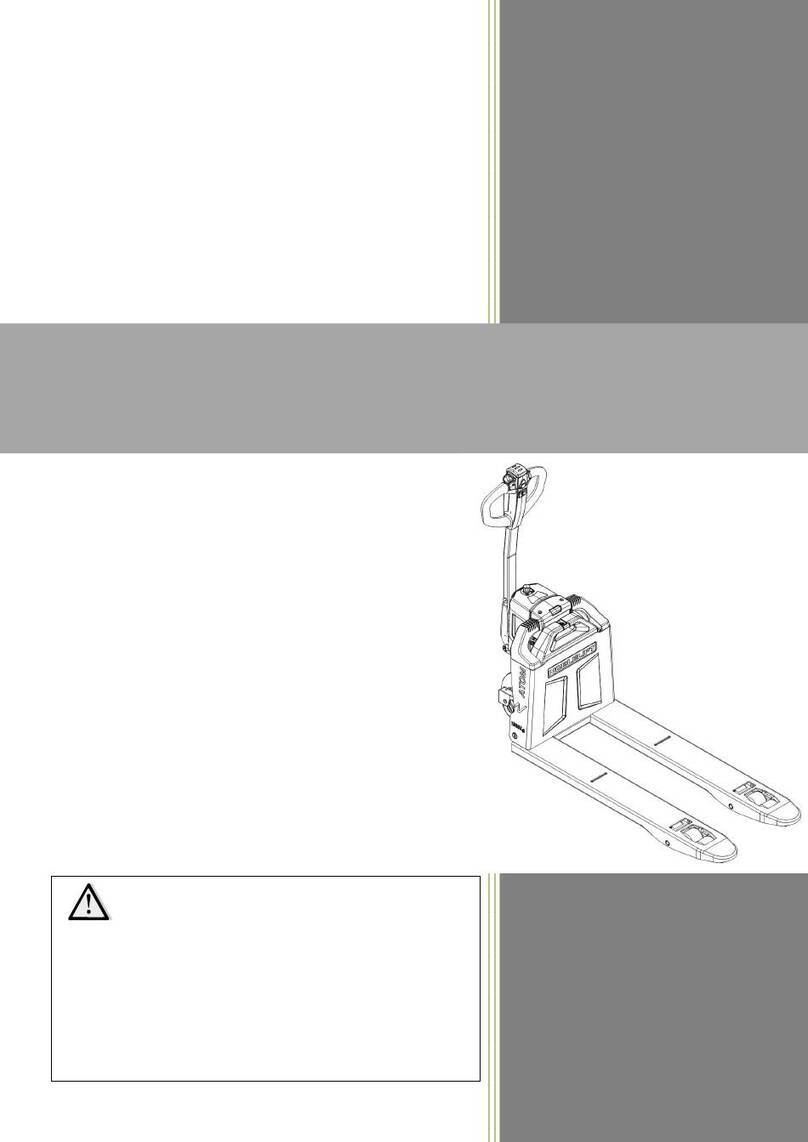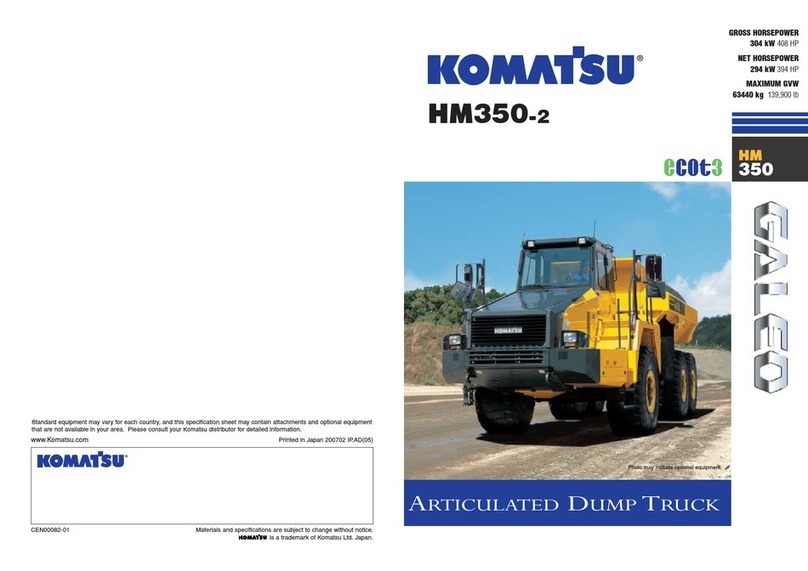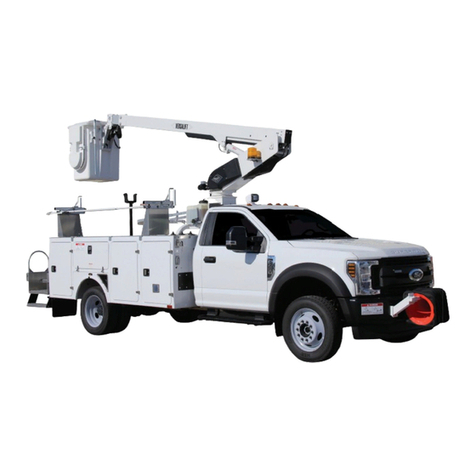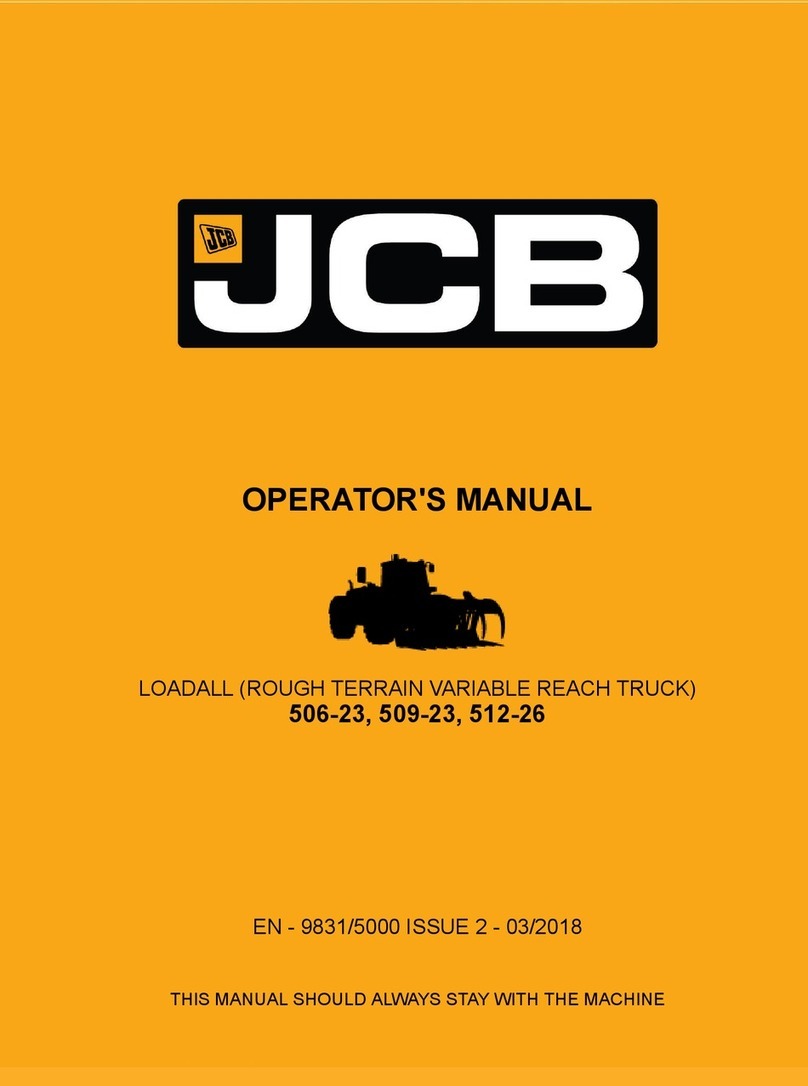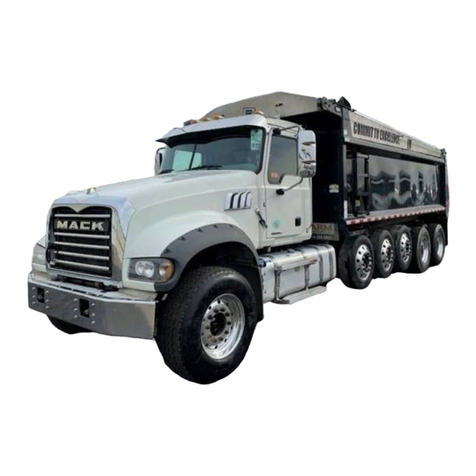TABLE OF CONTENTS
1. CORRECTAPPLICATION..................................................................................................................... 3
2. DESCRIPTION OF THE PALLET TRUCK............................................................................................. 4
a. Overview of the main components..................................................................................................... 4
b. Technical data..................................................................................................................................... 5
c. Description of the safety devices and warning labels (Europe and other, excepting USA)............... 6
d. Identification plate............................................................................................................................... 7
3. WARNINGS, RESIDUAL RISK AND SAFETY INSTRUCTIONS .......................................................... 8
4. COMMISSIONING, TRANSPORTING, DECOMMISSIONING.............................................................. 9
a. Commissioning................................................................................................................................... 9
b. Hoisting/ transportation....................................................................................................................... 9
c. Decommissioning.............................................................................................................................. 10
5. DAILY INSPECTION ............................................................................................................................ 10
6. OPERATING INSTRUCTIONS.............................................................................................................11
a. Parking............................................................................................................................................11
b. Lifting .................................................................................................................................................11
c. Lowering.............................................................................................................................................11
d. Travelling............................................................................................................................................11
e. Steering.......................................................................................................................................... 12
f. Braking............................................................................................................................................... 12
g. Malfunctions...................................................................................................................................... 13
h. Emergency........................................................................................................................................ 13
7. BATTERY SAFETY, CHARGINGAND REPLACEMENT.................................................................... 13
a. Safety Instructions............................................................................................................................ 14
b. Matters requiring attention................................................................................................................ 15
c. Replacement..................................................................................................................................... 15
d. Tiller panel......................................................................................................................................... 16
e. Charging ........................................................................................................................................... 16
8. REGULAR MAINTENANCE................................................................................................................. 18
a. Maintenance checklist...................................................................................................................... 18
b. Lubricating points.............................................................................................................................. 20
c. Check and refill hydraulic oil............................................................................................................. 20
d. Checking electrical fuses.................................................................................................................. 21
9. TROUBLE SHOOTING........................................................................................................................ 21
10. WIRING/ CIRCUIT DIAGRAM ........................................................................................................... 23
a. Electrical circuit diagram................................................................................................................... 23
b. Hydraulic circuit diagram.................................................................................................................. 26
11. SPECIALIZED STIPULATIONS FOR THE US-AMERICAN MARKET............................................. 27
a. Foreword/ Compliance ..................................................................................................................... 27
b. Identification plate............................................................................................................................. 28
c. Description warning labels (only US- market).................................................................................. 29
d. Technical data for US market ........................................................................................................... 31
12. DECLARATION OF CONFORMITY (valid, if sold within EU)............................................................ 33






